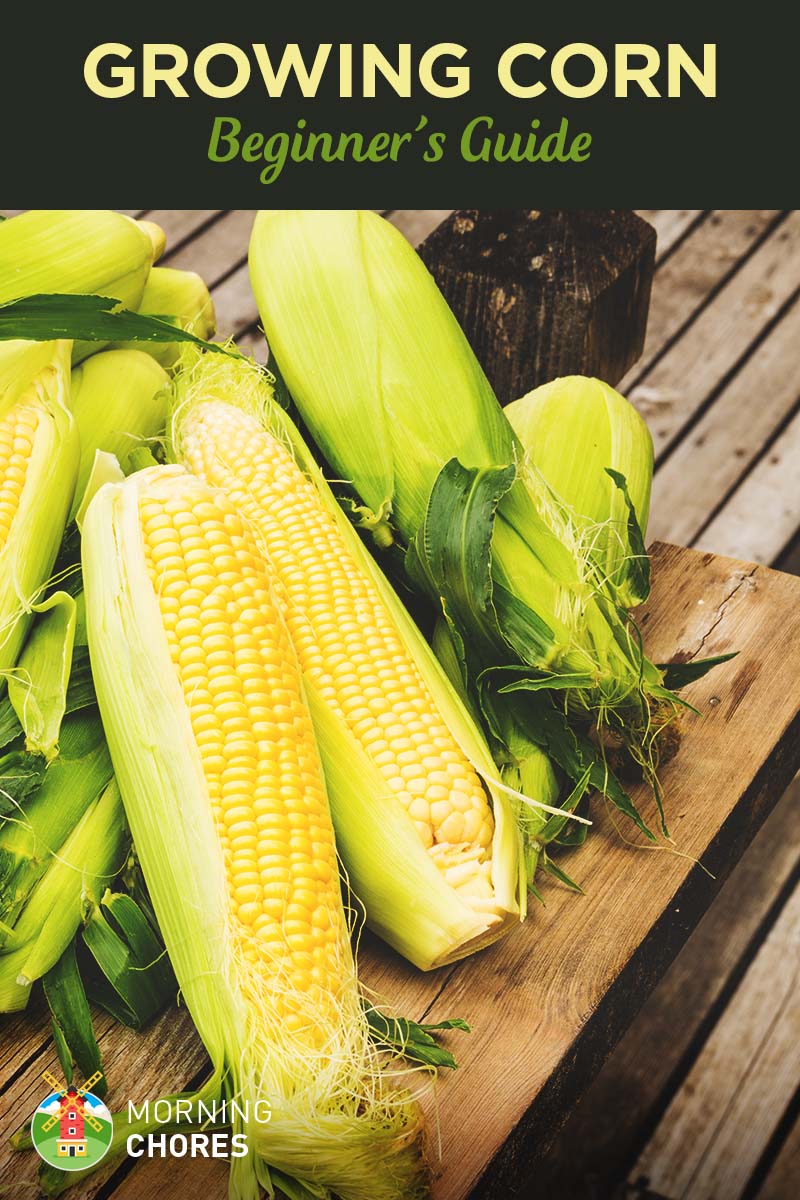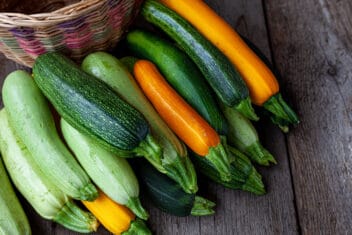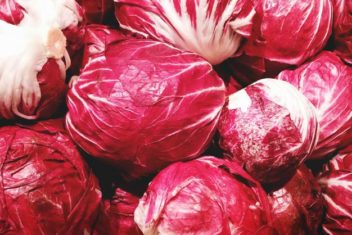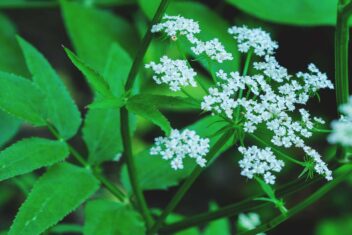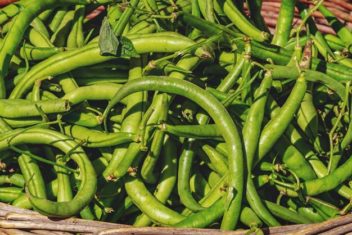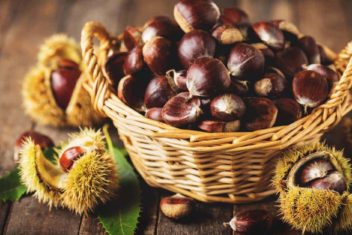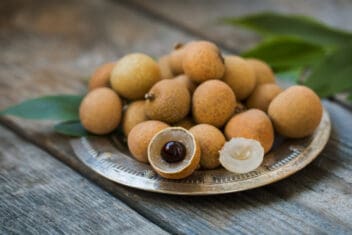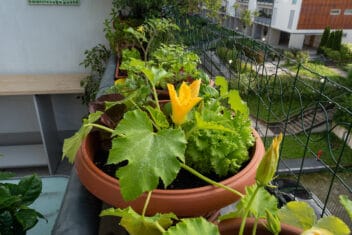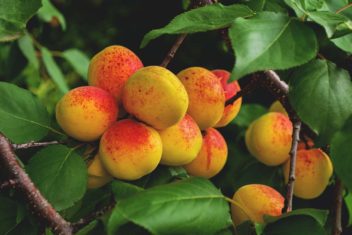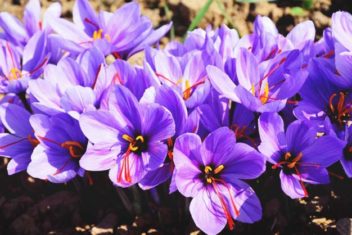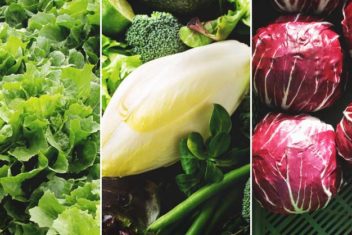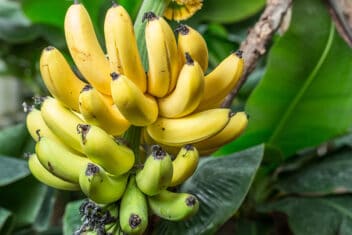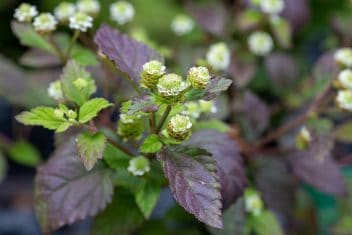If you have a fairly large space in your garden or farm, I think corn is the first plant you should think of growing. Not only fresh corn tastes amazing, but it’s also extremely versatile in the kitchen.
It’s considered a staple for a reason: you can store it for months, feed it to your animals, turn it into tortillas, soup, bread, salsa – even decor! With this guide and a little water, there’s no reason not to have a successful corn growing season.
The Best Corn Varieties
There are multiple categories of corn: sweet, flour, popcorn, dent, flint and pod corn. Each has its own uses.
Sweet Corn
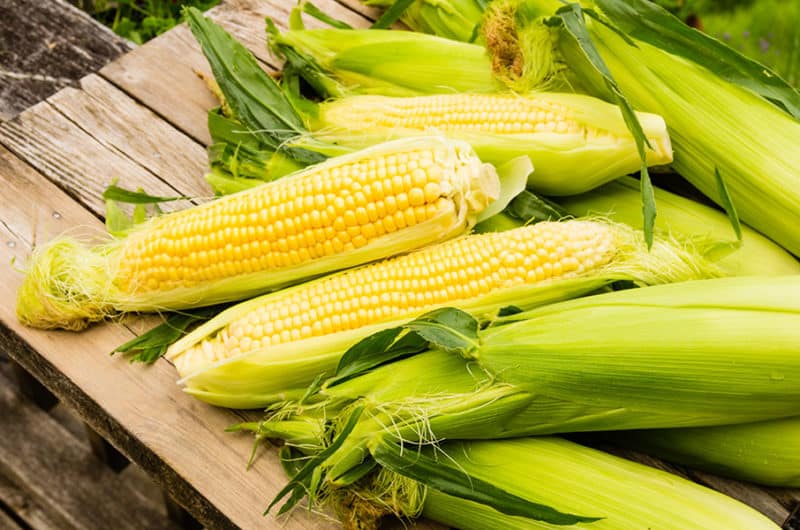

Sweet corn is the variety we are probably the most familiar with. It is most commonly used as a food source. It has a very sweet taste that can be eaten on or off the cob.
Sweet corn comes in a variety of colors including yellow, bi-color, or white. Familiar names for sub-categories of sweet corn are Silver Queen which is a white sweet corn and Peaches and Cream which is a bi-colored sweet corn.
Here are some of the best varieties to check out:
- Ambrosia Hybrid: Named after the custard, this variety is known for being very sweet and plump.
- Golden Bantam: This variety sprouts in cool soil early in the season. It only reaches 5 feet tall, but since it bears corn fast, it’s worth it.
- Honey Select Hybrid: Here is a winning variety that is triple sweet, with a rich flavor that you’ll love. The stalks reach 6 feet in height.
- Jubilee Hybrid: This variety of corn produces large ears that measure 9 inches long with bright yellow kernels. The kernels are sweet and can be preserved easily.
Popcorn
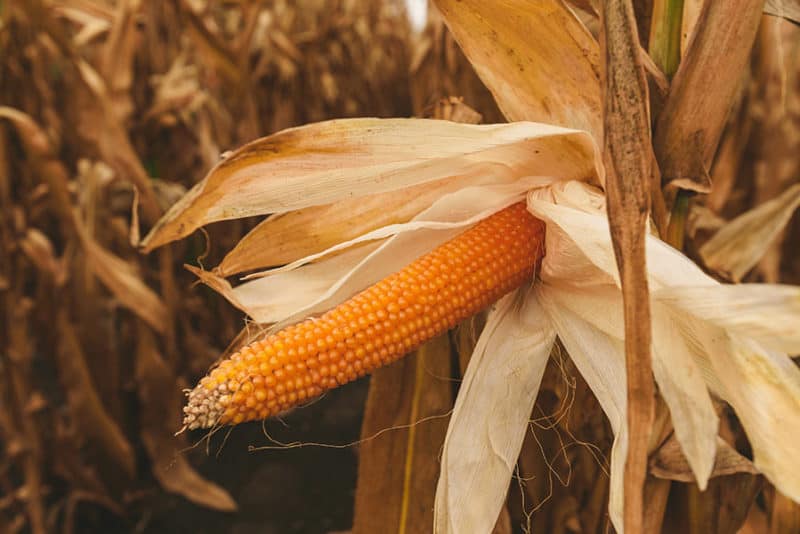

Yes, that yummy snack you buy in the microwavable bags at the grocery store actually starts in a field somewhere. If you want to learn more about this tasty type of corn, check out our guide dedicated just to growing popcorn.
Here are some of the best varieties:
- Carousel: Some believe that this is just ornamental, but it is edible. It produces mini ears that are 4-5 inches long with a sweet taste. You can dry the kernels or use them for decorations.
- Glass Gem: If you want a showstopping ear of popcorn, Glass Gem is for you. It’s multicolored, displaying colors of blue, yellow, red, and more. You can pop or grind these kernels.
- Heirloom Strawberry: This variety grows mini ears that are 2-3 inches long with ruby red kernels. It takes 100 days to harvest the ears.
- Snow Puff: Do you want movie night popcorn? Snow Puff produces sweet, white corn that pops to large sizes with thin hulls.
Flour Corn
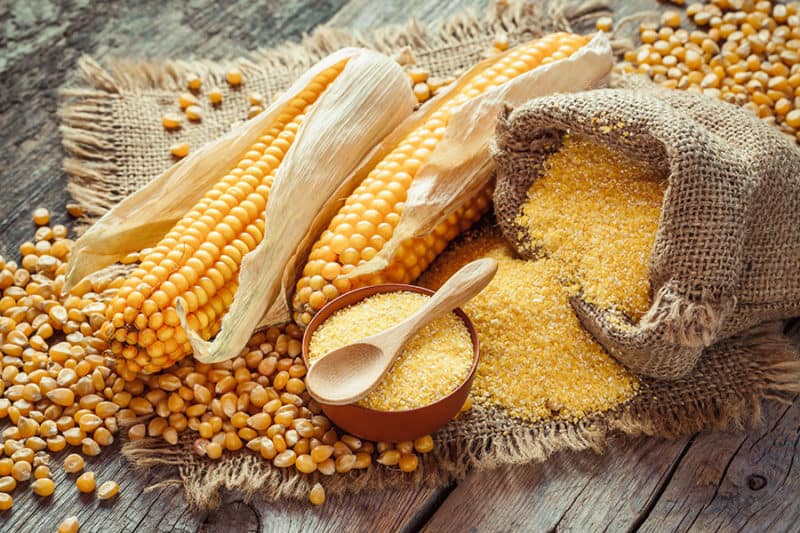

This type of corn is used to make cornmeal. Cornmeal can then be turned into delicious cornbread and other corn-based treats.
Check out these varieties if you’re hoping to grind and use corn flour:
- Floriani Red: Here is an Italian heirloom that creates medium red kernels. It creates cornmeal that has a pink hue, and it has a delicious flavor.
- Candy Red: These stalks reach heights of 8 feet tall with large ears. Originating in South America, Candy Red can be dried and ground into cornmeal that’s great for cornbread and corn pudding.
Dent Corn
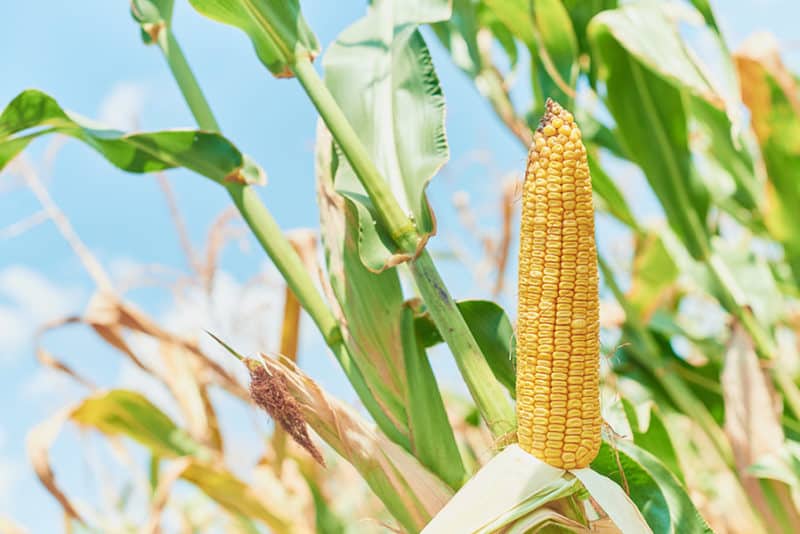

Dent corn is also known as field corn. This type of corn is used as feed and to make corn syrup or ethanol fuel.
I use this a lot around our farm as almost any animal will eat this treat and love it. Just be careful as too much can certainly pack weight on them.
Check out these varieties if you’re interested in this type:
- Reid’s Yellow: This variety dates back to the 1840s, and it grows exceptionally well in Southern states. It loves the heat and takes 85-110 days to harvest.
- Tennessee Red Cob: Here is a 1900 heirloom that grows large ears but typically only one per stalk. So, you do need to grow a lot of them for a decent harvest.
Flint Corn
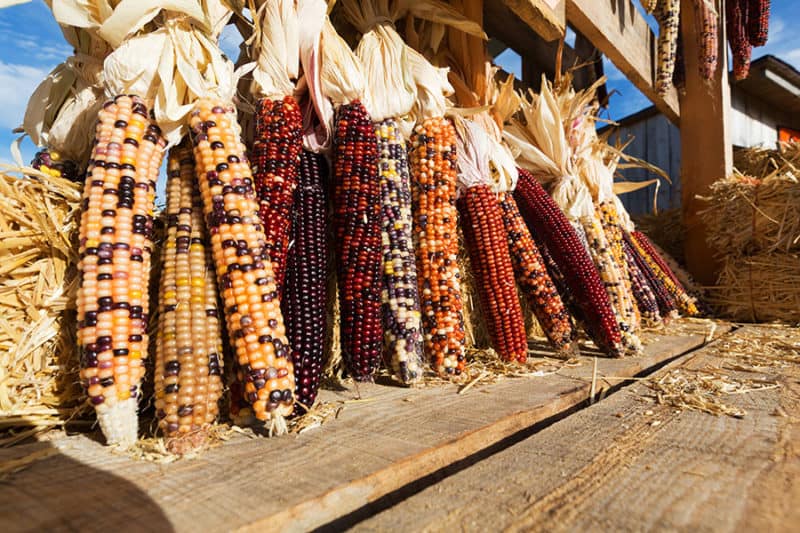

Flint corn is better known as Indian corn or wild maize. It’s named flint because of its hard outer coating. Many people had their first experience with it around Thanksgiving as a decorative piece.
As you have probably seen, it is dark multi-colored corn that can be dried out and used to make beautiful wreaths and centerpieces for the holidays.
You can also grind it to make masa or pop it for a treat.
Flint corn is most commonly grown in Central and South America, but it deserves a place in your garden.
- Cateto Sulino: Originating in South America, this variety is known for its insect resistance and bright orange color due to its high carotene content. The stalks reach heights of 5-8 feet with ears that measure 8 inches.
- Onaveno: This is ancient grinding corn that grows flinty, cream-colored kernels. Some of the kernels can be pink or purple on stalks that are 8-10 feet tall.
Planting Corn
Ready to learn how to grow corn in your garden? For the most part, corn is easy to grow and handles most conditions. Its main requirement is good soil. Are you ready for some fresh corn at your summer cook-outs? Let’s get started!
Growing Zones
Corn grows in zones 4-8.
Sun Requirements
Corn plants need a lot of bright, but indirect, sunlight. The plants tolerate low light better than direct sun. Consider a location that has sunlight throughout the day but might have a tree or two nearby that will cast a shadow during part of the day.
Make sure that the plants receive 10 hours daily of sunlight. They can handle as little as eight hours, but their growth might be affected.
Soil Requirements
The one thing that corn does tend to be picky about is the soil conditions. It’s best to work aged manure or compost into the ground the fall before planting, allowing it to overwinter in the soil.
If you didn’t do that, don’t stress! You can work compost into the soil in the early spring as well. Adding compost helps your soil to increase drainage as well. Corn plants don’t like standing water, but it does need to be able to hold some moisture.
Loam, PH between 6.0 to 7.0, deep fertile, well-drained, supplement with 1 to 2 inches of well-rotted or compost manure before planting.
When to Plant Corn
Corn is a warm-weather crop, so you need to make sure the danger of frost is gone before sowing the seeds outside. Plant corn seeds two weeks after your final frost date for optimal growth.
The soil temperature should be above 60°F. This allows germination to take place.
Don’t wait too long to plant. As soon as you know the temperatures are warm enough, plant the seeds because most varieties have a long growing period. If you live in an area with a shorter growing season, look for an early variety.
Planting Corn in the Garden
First, you want to make sure the soil is warm enough to plant. The soil temperatures need to be above 60°F for successful germination. If the soil isn’t warm enough, you can spread a black plastic cloth over your soil to warm it up faster.
It’s important to know that you should NOT start corn seeds indoors. You need to plant the seeds directly in the ground. Corn seedlings don’t handle their roots being disturbed during transplanting.
Spacing
Corn rows need to be spaced 30-36 inches apart. Plant the seeds 1 1/2-2 inches deep and 4-6 inches apart. That gives each corn stalk space to grow.
Cut a row with your tractor or a hoe (if you are planting in a smaller garden space) and drop the seeds in the ground and then cover them up gently with loose dirt.
Don’t plant different varieties too close to each other. I learned a hard lesson last summer. Corn cross-pollinates, so they will blend together because the wind pollinates these plants.
In my case, I tried to grow a popcorn variety and a sweet eating corn type. They cross-pollinated, and I was unable to eat the sweet corn at all.
Can You Grow Corn in Containers?
Surprisingly, the answer is yes! you can grow corn in containers! Your success does depend on t bb he right selection of containers. Pick a container that has adequate drainage and that is large enough to support a full-grown corn plant.
The pot should be at least 12 inches wide and 12 inches deep for each corn stalk.
You should only pick one type of corn to grow because they’ll cross-pollinate. Look for varieties that produce shorter stalks. Here are some options.
- Trinity
- Strawberry Popcorn
- Sweet Painted Mountain
How to Care for Corn in Your Garden
As easy as corn is to grow, it’s almost as easy to care for.
Thinning the Plants
When the plants are 3-4 inches tall, it’s time to thin them. Corn stalks should be 8-12 inches apart.
Basically, go along and pull the ones that are too close together by creating 8-12 inches of space between each plant. Just be sure not to damage the roots when weeding or thinning out your corn.
Watering Corn
Corn needs to stay well-watered because it has shallow roots. Because the roots are shallow, they are unable to reach water that is deep in the soil. So, you do need to water frequently. It’s suggested that each square yard receives 5 gallons of water.
Fertilizing Corn
You can decide to fertilize your corn plants whenever you meant. Corn grows rapidly, so if you properly fertilized before planting, you might not need or want to fertilize at all.
Mulch Around Your Plants
Because corn needs so much water, it’s recommended that you mulch around your plants. Mulching helps to reduce the evaporation of water from that ground. That decreases how frequently you need to water your plants!
Problems and Solutions to Growing Corn
Compared to most plants, corn does not have a lot of problems that go along with raising it. But there are still a few that are pretty easily fixed.
Corn Smut
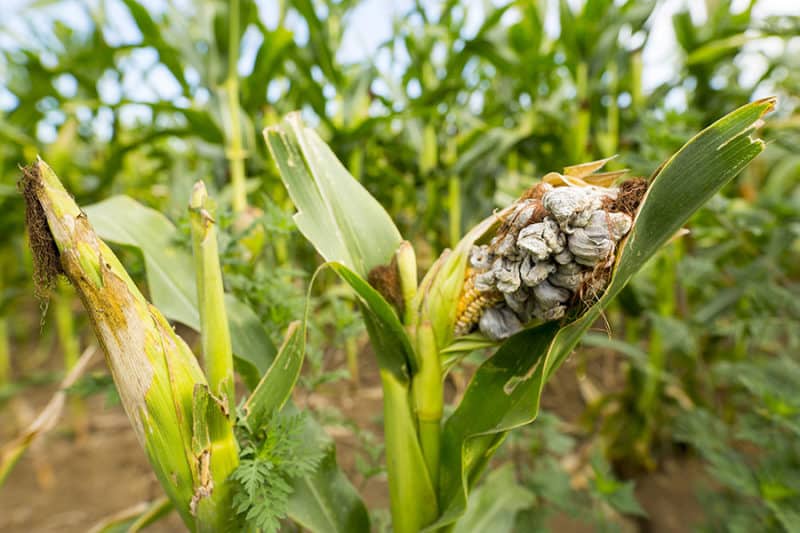

Corn Smut is a fungal disease that develops in the soil. You will know you have corn smut if you begin to see gray or white spots on the ears of your corn.
You can solve this problem by heading it off to begin with. If you space your corn properly then you shouldn’t have this issue.
But you also should rotate your crops every year. This gives them fresh soil to grow in each year and the opportunity for any fungus, disease, or pest to die off before planting that particular crop in that spot again.
Rust
Rust sounds basically like what it is. It is when red or orange spots begin to appear on the leaves of the corn.
This is something that usually takes care of itself. As your plants grow and mature the rust should disappear.
Stewart’s Wilt
Stewart’s Wilt is a virus that is brought on my flea beetles. That doesn’t sound like much fun, does it? Anything involving the word ‘flea’ usually lets you know upfront it isn’t good.
This can be beaten by rotating your crops. That will help to control the flea beetles. Also, spread wood ash out in your garden to stop flea beetles as well.
Seed Rot Disease
This is simply a fungus that is grown in your soil and infects your plants.
Don’t plant your seeds early. Make sure the ground is at or can be made to be 60 degrees Fahrenheit.
By doing so, this will help the seeds germinate faster and therefore, make them less susceptible to this fungus.
Root Rot
This sounds like what it is. It is rot that starts at the root and works its way all the way up the stalk of the plant.
Use a soaker hose when watering. It keeps dirt from being splashed up onto the plant which helps to keep rot at bay.
Southern Corn Leaf Blight
This will cause bleached or discolored spots on both the leaves and ears of the corn.
When this impacts your plants, all you can do is to pull up and discard the infected plants. You will also want to rotate your crops each year to stop this disease in its tracks.
Best And Worst Companions For Corn
Corn is a very friendly plant and has many great companions as a result. What I mean by ‘friendly’ is that because of its height it actually gives other plants a place to grow up and gives them a great chance of production.
The Good Companion
- Beans
- Cucumbers
- Melon
- Parsley
- Potatoes
- Pumpkin
- Squash
The Worst Companion
Corn actually only has one worst companion plant and that is tomatoes. The reason for this is that they attract the same worm which can damage and potentially kill both plants.
So there you have it. If you are looking to plant a good-sized garden, you can base it all around your corn and make picking and growing much easier because of it.
Harvesting and Storing Corn
The good thing is that it’s easy for gardeners to identify when it’s time to harvest corn. You’ll notice that the tassels on the stalks start to turn brown, and the cobs swell to a larger size. That’s when the kernels are full and milky, the perfect time to pick them off of the stalks.
To remove the ears of corn, pull them down and twist them off of the stalk. You don’t want to pull too hard, or you can break the stalk.
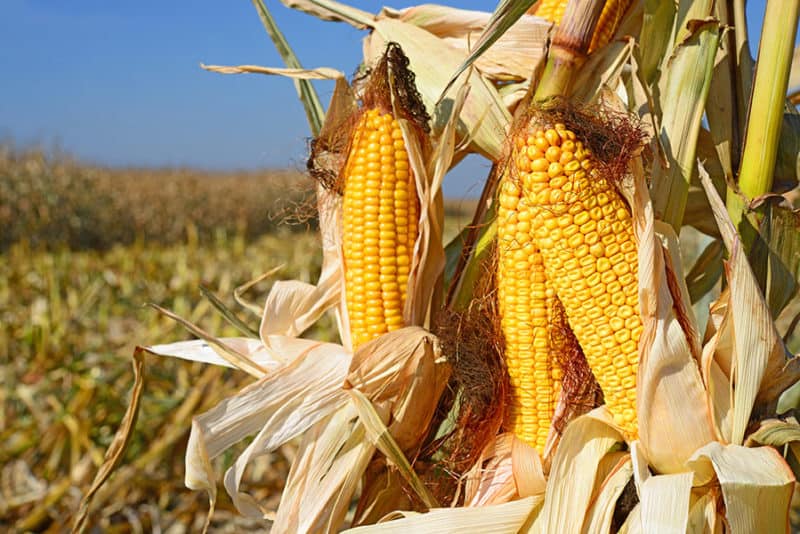

I usually pull up a chair on my back porch, get a big galvanized tub and have a silking party with family.
But I digress, you’ll see where the husks come to a point at the end of the corn. Find a loose leaf and pull straight down toward you. Do this to each leaf of the husk until it is completely removed.
You’ll then have little silky hairs all over the corn. I recommend getting an old toothbrush out and gently rubbing it over the corn to get all of the hairs off.
After you do that, you can cook the corn, can the corn, or freeze the corn.
Storing Corn Properly
If you grow sweet corn varieties, plan to eat them as soon as possible because that variety loses their flavor soon after harvesting. It’s best to preserve them or eat quickly.
You have several options for preservation. Here are a few ideas.
- Raw corn on the cob stores in the refrigerator for 1-3 days. If you cook the cob first, you can store them for 3-5 days in the refrigerator.
- You can cook and store the cobs in the freezer for 10-12 months.
- Another idea is to cook and cut the kernels of corn off of the cobs. Then, flash freeze on a baking sheet. Store all of the kernels in a large plastic bag in the freezer.
- You can dehydrate corn to be used in soups or other dishes.
- Canning corn is easy! You could can the kernels whole and plain, or you can make a Mexican inspired canned corn with peppers.
More Tips For Growing Corn Successfully
If you live in a colder climate, you might need to plant corn when temperatures haven’t quite reached 60°F in order for it to have enough time to grow.
To do this, cover the planting area with black plastic. Poke a hole in the plastic and plant the seeds through the hole. The seed should germinate and pop up through the hole. Remove the plastic once temperatures are steadily above 60°F.
Instead of planting corn in long rows, there are many claims that say planting corn in blocks actually works better. It gives them more protection when they are planted thicker in that pattern so it should stimulate growth and give you more production.
Finally, plant odorless marigolds or white geraniums around your corn to help deter Japanese Beetles. I did this in our garden this year, and I can say I don’t have nearly the amount of Japanese Beetles as I normally do.
Recipes For Your Corn
Corn is fairly easy to grow and doesn’t come with a lot of problems either. Having to husk, silk, and can it can be a little difficult at times.
But the fresh taste is completely worth it. So after you’ve put in all of the work to grow and harvest it, don’t you want delish recipes to put it to good use?
I thought you would so here they are:
1. Corn Relish
Corn relish always looks so tasty, and I love all of the fresh ingredients. We use different relishes in a lot of different recipes around our house so this one always appeals to me.
This recipe also shows you how to preserve your corn relish which is always an added bonus.
2. Mexican Corn
This corn looks so awesome I wish I had some right now. I usually prepare my Mexican corn off of the cob, but after seeing this, I think I’m going to change that approach.
3. Grilled Corn On The Cob
Grilled corn on the cob is one of the simplest ways to enjoy fresh corn. And it is super tasty too. So if you are looking for a simple recipe to enjoy your fresh corn, this one will probably do the trick.
4. Corn Pudding
This is the only recipe I ever use to make corn pudding. It is so good, and I absolutely love corn pudding.
In my mind, you don’t get much better than that!
5. Corn Fritters
I love corn fritters. They are so tasty and good. What I love about this recipe is that it takes corn fritters to a whole new level.
Not only are these yummy looking fritters, but they are also grilled. What more could you want?
Get Ready to Enjoy Your Own Corn Field
For some reason, lots of gardeners are intimidated to give corn a go. Don’t be. It’s fairly easy to raise and you can dedicate a tiny corner or a whole field to the versatile plant.
Have you ever raised corn in the past? Have any tricks of your own to share?
